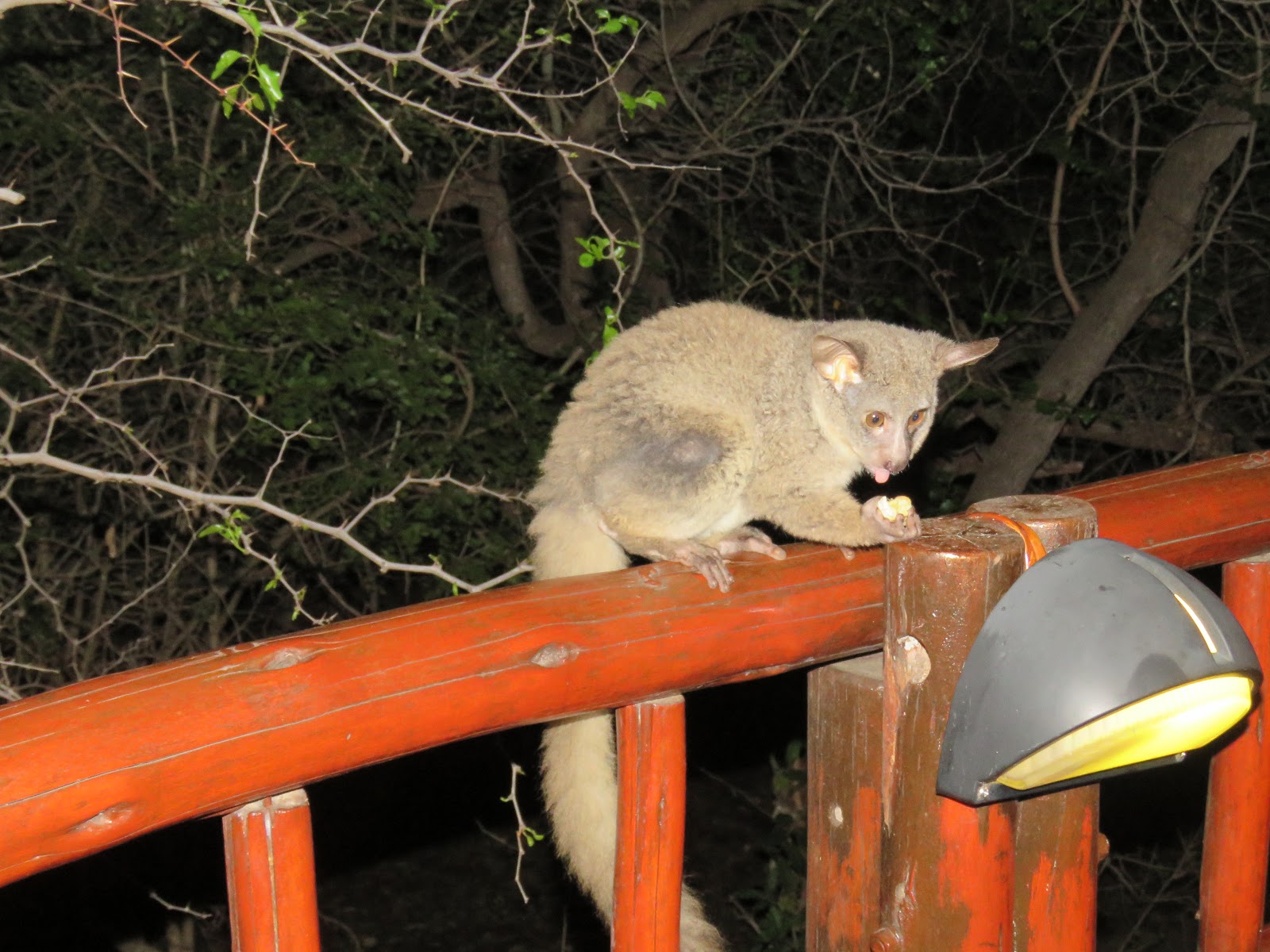 |
| This was our first daytime giraffe visit at this house. |
“Sighting of the Day in the Bush”
 |
| Zebras, helmeted guinea fowl, and of course our boy Tusker, whose quite a regular. |
This morning we heard helicopters flying overhead heading to Kruger National Park in search of poachers. A considerable effort is being made to preserve the integrity of our endangered species who are being slaughtered for their horns, tusks, and even the scales of the quickly becoming extinct pangolin (an animal we’ve yet to see and would love to).
 |
| Within minutes a second giraffe arrived, and we excitedly photographed them both. |
The sun is shining. The temperature is a comfortable 20C (68F) with a mild breeze. Endless varieties of birds are singing, and we even can hear the gurgling sounds of hippos a short distance away on the Crocodile River. .TIt couldn’t be a perfect morning…so we thought.
 |
| Giraffes have little competition for food in the treetops other than other giraffes. |
Awakening earlier than usual after a good night’s sleep, while Tom was watching the Minnesota Vikings final pre-season game, I interrupted him to ask if he’d like to go to Kruger once I completed the post and he finished watching the game.
 |
| We couldn’t have been more thrilled to see them in our garden at long last. |
In most cases, he enthusiastically agrees, but this time, he hesitated to state the weekend was here, and the crowds would be overwhelming in the national park during this busy holiday season.
 |
| This more miniature giraffe may have been the offspring of the visiting female. |
I was slightly disappointed but shrugged and went about my day, doing some laundry, chopping and dicing for tonight’s dinner, and reviewing the photos we had on hand for today’s post. Next week, we’ll surely head to Kruger, having been away for at least three weeks with our recent time out of the country.
 |
| Zebras are pretty rowdy with one another when competing for pellets. They don’t hesitate to kick and bite one another. |
Little did I know that within a matter of minutes, magic would happen, and visitors came, one species after another, including the very first visit to our grounds by giraffes, who we’d longed to see since our arrival over six months ago.
 |
| And then, a band of mongoose suddenly appeared, hoping for raw eggs. Tom mixed up a bowl full and placed it on the ground. |
We’d seen a few giraffes in neighboring properties and taken a few photos, mainly at night and once, several weeks ago, saw one giraffe lingering in our driveway late at night. But, never had any giraffes come to call during the day.
I couldn’t grab the camera quickly enough, especially when all at once we had the following: giraffes, zebras, warthogs, mongoose, and helmeted guinea fowl. We had visits from bushbucks, hornbills, duikers, and a wide array of bird species throughout the morning.
 |
| They are used to Tom bringing out the bowl of raw scrambled eggs and wouldn’t back off while he placed it on the ground. |
Tom didn’t hesitate to pause the football game to come outside to revel in the menagerie gracing us with their presence, each on their mission for some treats. Whether pellets, carrots, apples, eggs, or bird seeds, we joyfully shared our recently purchased inventory of things they love.
Unfortunately, giraffes don’t eat any foods we may offer when their goal and physical abilities only allow them to eat from the treetops or vegetation slightly below. They only bend to the ground when drinking.
 |
| They pile atop one another to get a lick out of the bowl of eggs. It’s hysterical to watch the action. |
The morning continued magically, reminding us of how grateful and humbled we are to be in this amazing place, unlike anywhere else in the world, for whatever time we have left to be in South Africa.
Tom finished watching the game; Minnesota won, he was happy. I stayed busy with my various projects, online research, and managing the morning’s photos. It’s been a great day so far. Let’s see what rolls out for the remainder of the day.
Be well. Be happy.
Photo from one year ago today, August 31, 2017:
 |
| Tom captured this unusual cloud formation in Costa Rica. For more, please click here. |



































































































































